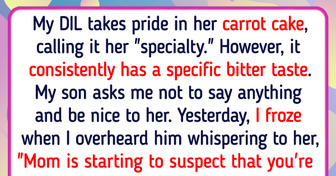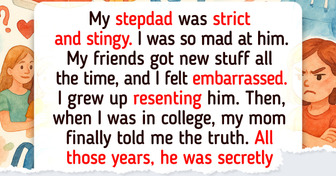A Homeless Woman Got a Free Makeover and People Can’t Believe Their Eyes


Christmas is one of the most widely celebrated holidays around the world, but the ways people observe it—and even the day they celebrate—can vary greatly.
While many are familiar with Christmas traditions such as Santa Claus, Christmas trees, caroling, and exchanging gifts, different countries—including the United States—add their own unique touches to the festivities, blending time-honored customs with modern innovations. While Christmas originated as a Christian celebration of the birth of Jesus Christ, it has evolved over time and been shaped by various cultural influences, historical events, and societal changes, as well as some consumerist influences. And here’re 6 most mind-boggling Christmas traditions that will make your mind twist.
It’s that time of year again: the lights are up, and the first Christmas bucket orders are being placed at KFC. Wait, what? Yes, you read that right—Christmas and KFC are deeply intertwined in Japan. Around December 25, families in Japan gather to enjoy a bucket of fried chicken for their holiday meal—a tradition that’s almost unthinkable in countries with Christian roots, where Christmas is typically, well, free of fast food.
You can start ordering buckets of crispy drumsticks and breast pieces as early as November. But even then, you’ll have to brave the long lines outside KFC locations across the country on Christmas Day to collect your order. But why is this the case?
The origins of this tradition can be traced back to one man: Takeshi Okawara, the innovative manager of Japan’s first KFC, which opened in Nagoya in November 1970. According to the company’s story, Okawara had a vision of selling a “party bucket” of chicken and launched a campaign at his one-store location to increase sales.
The inspiration for this idea reportedly came when Okawara overheard an expat expressing their longing for turkey during the holiday season, suggesting that chicken could be the next best thing for Christmas. Whatever the exact details, Okawara’s initiative became the foundation for what would evolve into a Christmas tradition in Japan, especially after the winter of 1974.
While Poland isn’t immune to the growing commercialization of Christmas, many traditional customs have been carefully preserved, and the Polish take Christmas very seriously. As one of the two major Catholic holidays of the year (the other being Easter), the way Poles celebrate Christmas holds deep cultural significance and is cherished by most. As a result, Polish Christmas is filled with heartwarming traditions and rituals, some of which may seem surprising to outsiders.
One tradition is sharing wafers before dinner. This tradition may seem a bit complicated at first, but it’s easy once you learn the simple rules. Before everyone sits down to eat, the host hands out pieces of opłatek, a thin wafer made from flour and water, which has been blessed by a priest. Don’t eat it right away—first, you need to go to each person present, wish them a Merry Christmas (you can make it more personal if you know them well), break a small piece of their opłatek, and allow them to do the same with yours.
After this, you can eat the piece you were given and move on to the next person. Once you’ve gone around, exchanged hugs and kisses, and shared the wafers with everyone, you’re then free to eat the rest of your wafer and take a seat.
For centuries, families across much of Central Europe have relied on one simple main dish for their Christmas Eve dinner: the common carp.
However, getting the carp from the river (or carp farm) to the table is not quite as straightforward. According to tradition, the Christmas carp must first swim in the family bathtub for at least a day or two before being prepared.
In Slovakia, as well as in nearby countries like Poland, the Czech Republic, Austria, Germany, and Croatia, the carp actually live in the bathtub for several days. Children often name the fish, and during this time, no one is allowed to bathe. The fish swim around, becoming part of the household, until it’s time for them to be prepared for the Christmas Eve meal.
Have you ever wondered why the Philippines has the longest Christmas celebration? It begins in September and lasts until January, creating a festive atmosphere that delights both locals and visitors. Filipino Christmas, or “Pasko,” is a vibrant blend of religious observances, family gatherings, and community activities, making it a unique and joyous time of year.
Christmas in the Philippines is closely tied to the country’s history and faith. With approximately 90% of Filipinos identifying as Christian, the holiday primarily honors the birth of Jesus. At the same time, it showcases the country’s distinctive cultural traditions. This fusion of faith and culture creates a festive atmosphere that is truly one-of-a-kind.
Family is at the heart of Christmas in the Philippines. With large families, the holiday is filled with energy and excitement. Many overseas workers return home, bringing gifts and spreading joy. Filipino homes are beautifully decorated to reflect the season’s cheer. You’ll find large Christmas trees, vibrant ornaments, and the parol—a star-shaped lantern symbolizing the Star of Bethlehem.
The Noche Buena feast on Christmas Eve is centered around food and togetherness. Traditional dishes like lechon (roast pig) and fruit salad are shared during big family gatherings. As Christmas traditions in the Philippines evolve, they retain their cultural significance. They adapt to the modern world while keeping the spirit of the season alive, making Christmas a joyful and meaningful time for all.
Advent, the four Sundays leading up to Christmas, is a cherished tradition in Switzerland. You’ll find Advent wreaths, decorated with the requisite four candles, in florist shops and grocery stores across the country.
Advent calendars, in all shapes and sizes, begin to appear as early as November. The most popular ones feature a small chocolate treat behind each of the 24 doors. The largest Advent calendar in Switzerland is the illuminated one in Lucerne, located along the banks of the River Reuss.
In Switzerland, as in many parts of Europe, the tradition of counting the days until Christmas Eve is celebrated with Advent calendars, marking the 24 days from December 1st to 24th. St. Nicholas Day, celebrated on December 6th, is a joyful occasion, especially for children. They receive gifts or place their shoes by the door or fireplace, eagerly awaiting St. Nicholas’ arrival and the presents he brings.
In the village of Küssnacht, located by Lake Lucerne, a special event takes place the evening before St. Nicholas Day. Known as the Klausjagen, hundreds of bell ringers, horn blowers, and whip crackers take part in a dramatic procession, welcoming the arrival of Samichlaus in a lively and traditional celebration.
In the world of holiday movies, we often envision Christmas with snow-covered landscapes, cozy fireplaces, and warm cocoa. However, in Australia, where December falls during the summer, Christmas takes on a different yet equally magical atmosphere.
Instead of snow, you’ll find sun-soaked beaches, barbecues, and festive gatherings under clear skies, creating a unique holiday experience.
Bronte Beach in Sydney, Australia, is famous for hosting the largest public beach party on Christmas Day, drawing both locals and tourists for a festive celebration unlike any other. As one of Sydney’s most stunning beaches, Bronte offers a unique holiday experience that blends traditional Christmas cheer with the laid-back, sunny vibe of Australian beach culture.
On the morning of December 25th, Bronte Beach undergoes a magical transformation. The usually peaceful beach comes alive with a burst of colors and sounds. People from all walks of life, sporting Santa hats and summer clothing, gather under the Australian sun. The beach becomes a melting pot of cultures, showcasing how Christmas is celebrated around the world.
Visitors can enjoy a range of activities. The daring might take a swim in the ocean, while others join in a game of beach volleyball or simply relax on the sand. Children build sandcastles and play, their laughter blending with the soothing sound of the waves. The nearby park area is ideal for family picnics, with the aroma of barbecues wafting through the air.
Local food stalls and cafés serve up everything from traditional Aussie barbecues to international dishes, satisfying a diverse crowd’s tastes. The atmosphere is filled with the strumming of guitars and spontaneous caroling, creating a joyful soundtrack to accompany the festive day.
And here’re 10 really magic Christmas stories that will make you believe that wonders happen in real life.











